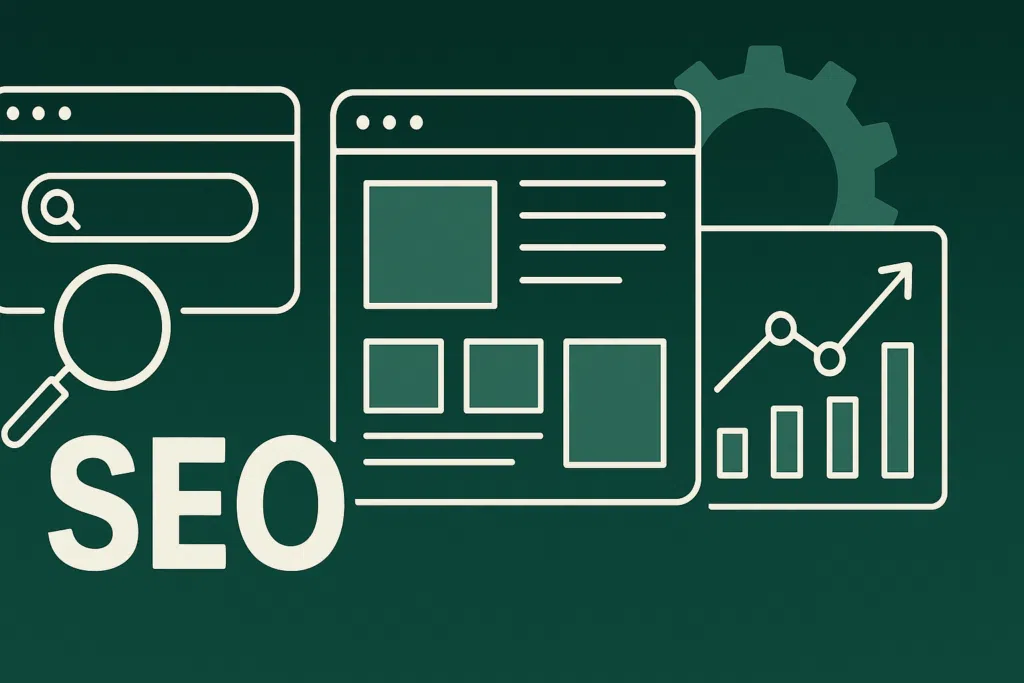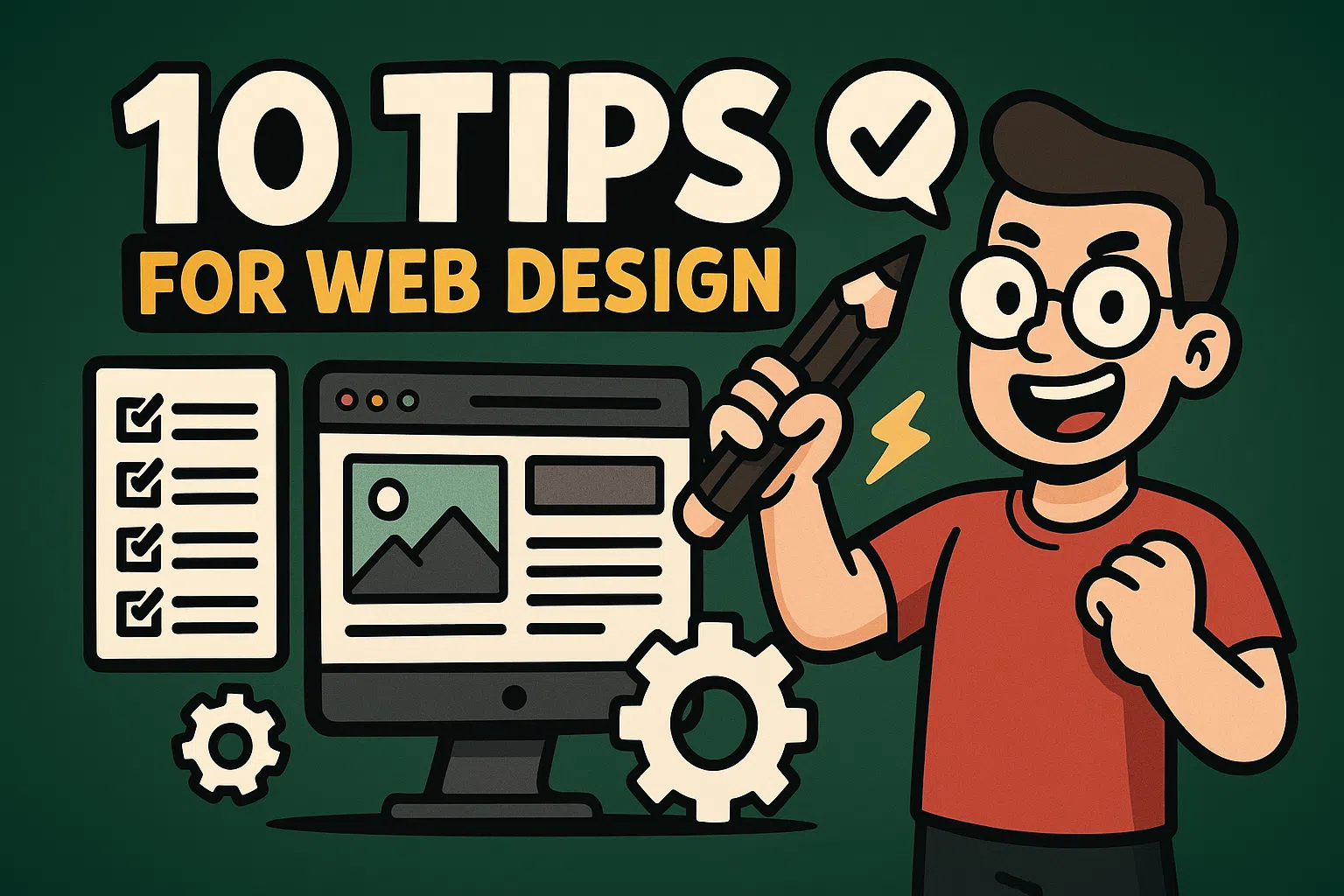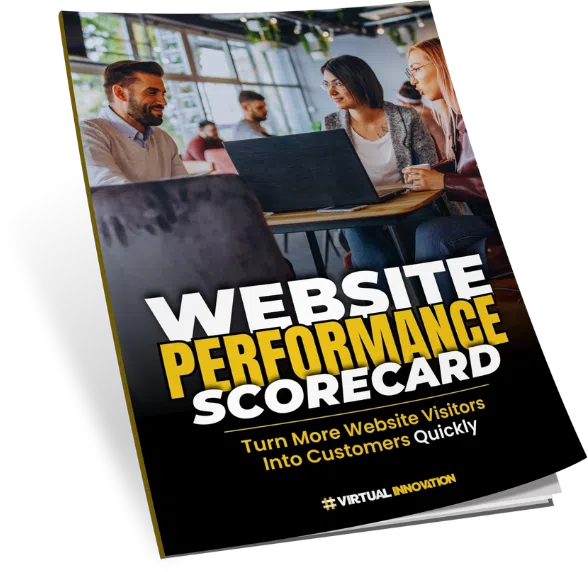
In today’s digital landscape, your website serves as the front door to your business, making first impressions more critical than ever. A well-designed website not only captivates visitors but also enhances your company’s credibility and drives conversions.
Website Design For Company Growth is essential. Don’t leave money on the table or for your competitors. What you miss – they won’t.
With countless options at their fingertips, users will quickly bounce from a cluttered or outdated site, so it’s vital to stay ahead of the curve. From intuitive navigation to responsive layouts, the right design choices can elevate your online presence and keep your audience engaged. In this article, we’ll explore 10 essential website design tips that will transform your digital space into an inviting and effective platform. Whether you’re starting from scratch or looking to revamp an existing site, these strategies will help you create an experience that resonates with your brand and your customers. Let’s dive in and unlock the potential of your online presence!
Get some good tips on Growth Planning on Wikipedia here.

Why Website Design for Company Success Can’t Be Ignored
Your website is your business suit on the internet – sharp design attracts attention, sloppy design sends people running. When someone lands on your site, they’re judging your brand in seconds. A clean, on-brand, easy-to-navigate design instantly builds trust and makes people want to stick around.
That’s why investing in strong website design for company visibility is a no-brainer – it’s not just about looking good, it’s about being taken seriously. Great design means users can find what they need fast, without friction. That ease of use? It builds trust and loyalty. And here’s the kicker: Google loves a user-friendly site. A fast, responsive, well-structured site means higher rankings, more traffic, and more conversions. Website design isn’t a “nice-to-have” – it’s a strategic move for serious business growth.
Web Design for Company Audiences Matters
Your website should speak directly to the people you want to reach. That starts with knowing exactly who they are. What do they care about? What frustrates them? What device are they using? Understanding your audience helps you shape every design decision – from colours and layout to language and buttons. A younger, digital-native crowd? You’ll need bold visuals and slick mobile responsiveness. A more mature audience? Clean design, big fonts, no fluff.
Creating user personas (fake but accurate profiles of your dream customers) helps make this real. Then, map out their journey. How do they go from “just looking” to “let’s talk”? Each click should feel natural. Each step easy. When you focus your website design for company audiences, your site stops being generic and starts working like a magnet – pulling in the right people and turning them into customers.
What Makes Website Design Actually Work
Great website design for company performance isn’t just about pretty pictures. It’s about how the whole thing works together to guide and convert. First up – layout. A clean, structured layout makes your content easy to digest and your navigation easy to follow.
Ditch the clutter. Keep the focus. Next – navigation. It should feel natural. Think: clear menu, no dead ends, and a search bar that actually works. If people get lost, they leave. Then there’s visual hierarchy – basically, what grabs attention first.
Use size, colour, and placement to guide the eye to what matters: headlines, key messages, and those all-important call-to-actions. When done right, your site feels effortless to use – and that means more action, less bounce.
UX: The Secret Sauce in Website Design for Company Growth
User Experience (UX) is what turns a “meh” site into one people love. It’s the difference between confusion and conversion. Good UX means your site is intuitive, easy, and enjoyable. Start with usability – make tasks simple. Forms should be clean. Buttons clear.
No weird surprises. Then, accessibility – your site should work for everyone. That means readable text, alt tags on images, and enough contrast for folks with visual impairments. Lastly, user-focused design. Test your site with real users. Watch where they click.
Listen to where they get stuck. Then fix it. Website design for company growth isn’t a one-time thing – it’s a cycle of improve, refine, and level up. Prioritise UX and you’ll turn visitors into fans – and fans into customers.
Mobile Responsiveness: Non-Negotiable in Website Design for Company Success
Let’s cut to it – if your website looks like a mess on mobile, you’re losing business.
Modern website design for company growth must work perfectly on every screen – from chunky desktops to cracked iPhones. A mobile-responsive site reshapes itself like water in a glass – adapting beautifully to fit wherever it’s viewed.
People won’t pinch, zoom, or squint. They’ll bounce. And when they bounce, Google notices. With mobile-first indexing, if your site’s not slick on mobile, your rankings take a dive.
✅ Easy nav
✅ Readable text
✅ Fast loading
✅ Happy users
✅ Better rankings
Mobile responsiveness isn’t a “nice to have” – it’s the launchpad for a site that converts.
Colour & Typography: Make It Match & Make It Matter
First impressions count. Your website design for company visibility has seconds to impress – and colour plus type do the talking before anyone reads a word.
Colours trigger emotions (blue = trust, red = urgency, green = growth). Use them with intent. Keep it simple: 1–2 primary colours + a pop colour for calls-to-action. Consistency is your secret weapon here.
Typography? It’s like the tone of your voice. Pick 2–3 fonts max. Easy to read. Clear hierarchy. Make the important stuff shout (visually, not literally).
Great design isn’t decoration – it’s direction. And it keeps your visitors flowing through your site like water down a smooth slide.
Images & Graphics: Sharp, Strategic, and Stunning
Nothing says “we mean business” like high-quality visuals. In website design for company credibility, visuals are trust signals.
Grainy, generic pics? Bin them. Go custom or go crisp with pro-level stock. Bonus points for branded graphics and illustrations that give your site a unique edge.
But here’s the kicker – great images should serve the story, not steal the spotlight.
Oh, and optimise those file sizes or your site will load like dial-up. Fast site = better UX = better SEO = more leads.
In short? Design that looks good, feels good, and loads fast wins every time.
Essential Features Every Business Website Should Have
To create a functional and user-friendly website, it’s important to include essential features that meet your visitors’ needs and support your business goals. One of the key features is a clear and compelling call to action (CTA). CTAs guide users towards specific actions, such as making a purchase, signing up for a newsletter, or contacting your team. Ensure that your CTAs are prominently displayed, easy to understand, and encourage users to take the desired action.
Another essential feature is a contact page with various options for users to get in touch with you. Include a contact form, email address, phone number, and physical address if applicable. Providing multiple contact methods builds trust and makes it easy for visitors to reach out with questions or inquiries. Additionally, consider adding a live chat feature to offer immediate assistance and enhance customer support.
A well-organized and informative about page is also crucial for building credibility and connecting with your audience. Use this page to share your company’s story, mission, values, and team members. Highlight your unique selling points and what sets you apart from competitors. An engaging about page can help visitors understand your brand and build a personal connection, increasing their likelihood of becoming loyal customers.
As Auckland Website Designers we get it.

SEO Best Practices: Website Design For Company Growth only works if you can be found!
Search engine optimisation (SEO) is a vital aspect of website design that ensures your site is discoverable by search engines and ranks well in search results. Implementing SEO best practices can drive organic traffic to your site and improve your online visibility. Start by conducting keyword research to identify relevant terms and phrases that your target audience is searching for. Incorporate these keywords naturally into your content, headings, meta descriptions, and image alt text.
On-page SEO involves optimising individual pages to improve their search engine rankings. Focus on creating high-quality, informative content that addresses your audience’s needs and questions. Use descriptive and keyword-rich titles and headings to enhance relevance and readability. Ensure that your URLs are clean and include relevant keywords. Additionally, optimize your images by using descriptive file names and alt text to improve accessibility and search engine indexing.
Technical SEO is also critical for ensuring that search engines can crawl and index your site effectively. This includes optimising your site’s speed, ensuring mobile-friendliness, using secure HTTPS protocols, and creating an XML sitemap. Regularly monitor your site’s performance with tools like Google Analytics and Google Search Console to identify and address any issues. By following SEO best practices, you can enhance your website’s visibility, attract more organic traffic, and achieve better search engine rankings.
Conclusion: Transforming Your Online Presence with Effective Design
In conclusion, a well-designed website is a powerful tool that can elevate your company’s online presence and drive business success. By prioritizing user experience, mobile responsiveness, and strategic design choices, you can create a digital platform that captivates visitors and converts them into loyal customers. Understanding your target audience, selecting the right color scheme and typography, and incorporating high-quality images and essential features are key to creating an engaging and functional website.
Moreover, implementing SEO best practices ensures that your site is discoverable by search engines and attracts organic traffic. By continuously optimizing and refining your website based on user feedback and performance data, you can stay ahead of the curve and provide a seamless and enjoyable experience for your visitors. Investing in effective website design is not just about aesthetics; it’s a strategic move that can enhance your brand’s credibility, visibility, and overall success in the digital landscape.
As you embark on your website design journey, remember that the ultimate goal is to create a platform that resonates with your audience and supports your business objectives. With the right design strategies and a user-centric approach, you can transform your online presence and unlock the full potential of your digital space. So, take the plunge, apply these essential website design tips, and watch as your website becomes a powerful asset that drives growth and success for your company.
We are an expert Web Design Auckland based company. We’re here to help.
💻 Need help with your digital presence?
We offer:
📞 Contact us today to elevate your brand online.
👉 [Book a Call Now] with our Auckland-based WordPress development team.





